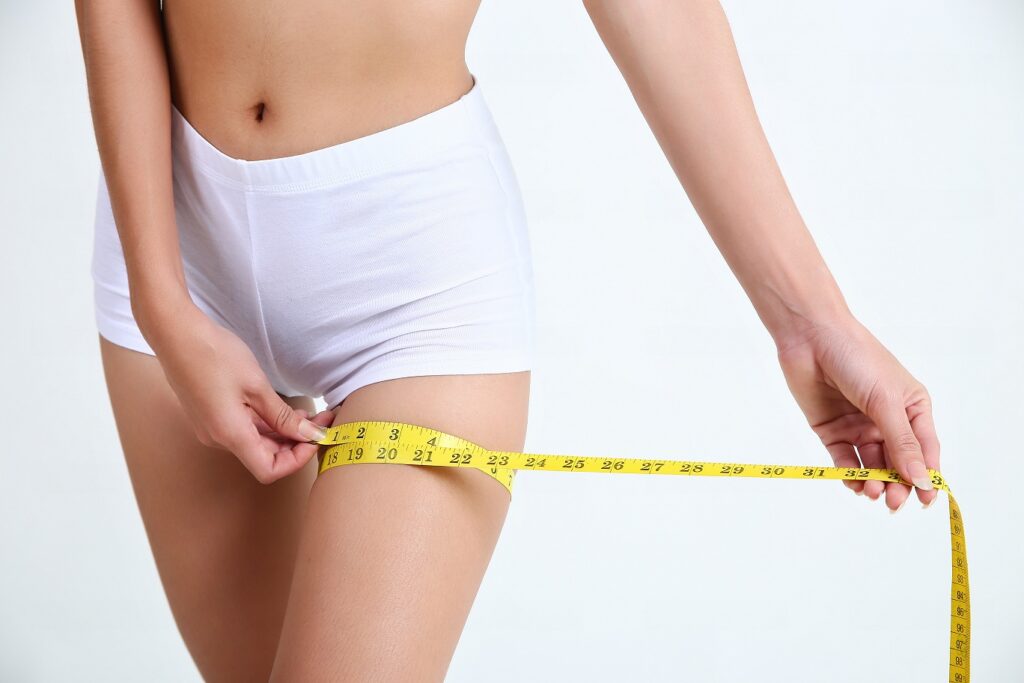The thighs can be affected by various circumstances : weight variations, little to no exercise, hormonal imbalances, aging, etc. This affects the skin, as it becomes flaccid and frequently presents an accumulation of fat.
The thigh lift is a surgical procedure that improves the shape and smoothness of the legs by eliminating the flaccidity of the skin and excess fat, the skin is tightened upwards and the tissues are anchored to the muscular plane so that they remain fixed in their new place.
Benefits:
- Improvement of the body contour
- Reduction of the volume and excess skin of the legs and thighs.
- It allows the reusage of certain articles of clothing.
- Improvement in the physical appearance of patients who have lost weight drastically due to diet, exercise, obesity surgery, or who have lost elasticity for other reasons.

Indications:
- Excessive flaccidity of skin either on the inner, outer, or back of the thighs
- History of bariatric surgery with consequent significant weight loss and general flaccidity.
Procedure:
- The procedure begins with the delicate and symmetrical fine marking of the thigh and the tissue area that needs to be removed.
- The patient may be under sedation or epidural anesthesia.
- According to the design, the incision is located only on the inner thigh near the groin or it may be necessary to take it to the gluteal fold. The incisions will be proportional to the amount of excess skin and will be located so that the scars are as less visible as possible.
- On very specific occasions, the thigh and gluteal lift may require circular incisions, but it is the least common scenario.
- Removal of The excess skin and traction of the thigh skin depends on the type of problem to be solved and its anatomy.
- Fixation to the deep planes is carried out so that the skin does not give away again.
- Sometimes it is necessary to leave drainage tubes for a few days after surgery.
- The l suture is absorbable and intradermal , therefore the stitches are not removed, they will be automatically resorbed.
- Bandage the legs for two or three days.
Postoperative care:
- After a thighplasty, the incisions will be covered with adhesives and the legs will be softly wrapped with elastic bandages to minimize swelling.
- Analgesics and antibiotics will be indicated.
- Bed rest for a day or two, without stressing the sutures.
- Wear an elastic garment (compression pants) for a few weeks, its function is to keep the skin in its correct position for healing and continuous pressure to help reduce edema. The edema will subside in about 10 days and it will take a few more weeks for the legs to regain their completely normal appearance.
- Numbness is common at first. You will be able to return to your regular activities without undue stress after a week.
- Postoperative lymphatic drainage.
Contraindications:
- Smokers
- Heart diseases.
- Collagenopathies.
- Immunodeficiencies.
- Clotting disorders.
- weight-loss cure.
- Any medical condition that interferes with wound healing.
- Varicose veins grade IV of the lower limbs.
Other recommendations:
- Sometimes due to excessive physical activity or inappropriate movement, dehiscence of the operative wound can occur, due to excessive tightness. Therefore rest is very important. Be extremely careful with the movements of the body during the first two weeks. Frequently the thighplasty or femoral lift is combined with other surgeries such as mastopexy and arm lift, returning the appropriate proportions to the body.
Image Sources: Foto de Mujer creado por jcomp – www.freepik.es